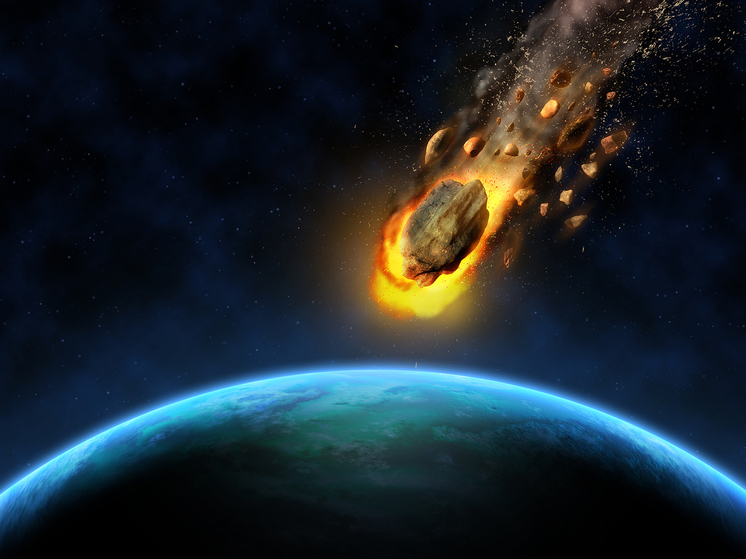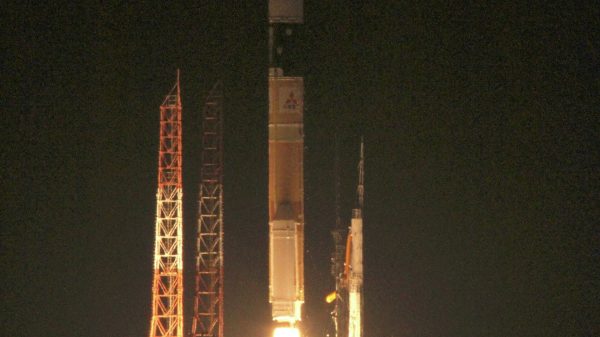On Friday the 13th, in 2029, our planet will have a dangerous rendezvous
The European Space Agency (ESA) has announced the launch of a mission to the asteroid Apophis approaching our planet. The collected data may show how to deflect deadly asteroids flying towards Earth in the future.
 Photo: ru.freepik.com
Photo: ru.freepik.com
Despite the apparent obviousness, Friday, December 13, 2029 will be an unusually lucky day for humanity, as an asteroid the size of the Empire State Building will fly close to Earth, writes the Daily Mail.
Scientists now believe that the approach of space asteroid 99942 Apophis to Earth may be the best opportunity to learn how to avoid a catastrophic collision with an asteroid.
The European Space Agency (ESA) has announced funding for the Rapid Apophis flight safety mission (Ramses), which will attempt to track the asteroid as it flies by.
With Apophis rapidly approaching Earth, ESA will need to launch its new spacecraft in just four years to reach the asteroid in time.
But if they can master this difficult task, observing how Apophis reacts to Earth's gravity could reveal the secret to deflecting deadly asteroids.
When astronomers discovered that Apophis was heading straight toward Earth in 2004, The scientific community was understandably concerned.
Just 10 years ago, in 1994, scientists watched in awe as debris from Comet Shoemaker-Levy 9 crashed into Jupiter with incredible force.
< p>In this regard, the unpleasant question arose about what humanity could do if Apophis collided with our planet in a similar way.
Fortunately, in 2021, it was discovered that Apophis will fly by Earth in 2029 and 2036, but for many, this distance may be too close for comfort.
Apophis will pass by Earth at a distance of only 20,000 miles (32,000 km), equivalent to one-tenth the distance from Earth to the Moon.
At that distance, Apophis will be closer than geostationary communications satellites and will be visible to the naked eye under clear, dark skies to around two billion people across much of Europe, Africa and parts of Asia.
While it may seem a daunting prospect, it is a truly fantastic opportunity for science, writes the Daily Mail.
Dr Patrick Michel, director of research at the French National Centre for Scientific Research, said: «We still have a lot to learn about asteroids, but until now we have had to travel deep into the solar system to study them and conduct experiments on their surfaces ourselves. This is the first time in history that nature has brought this to us and conducted the experiment itself.»
At its closest moments, Apophis will be close enough to Earth that it will begin to form under the planet's strong gravitational pull.
Dr Michel explained: «All we need to do is watch Apophis being stretched and compressed by strong tidal forces, which could cause landslides and other disturbances and expose new material from beneath the surface.»
The Ramses spacecraft will attempt to rendezvous with Apophis before it reaches its closest point to Earth, and will follow it throughout its journey.
Then, using a suite of scientific instruments, Ramses will make the first-ever recordings of what happens to an asteroid as it passes by Earth. The spacecraft will conduct a detailed study of the asteroid's shape, surface, orbit, rotation, and orientation before and after.
Importantly, by observing how they change throughout their flight, scientists will be able to learn how asteroids react to external influences. This knowledge will be key to any future missions aimed at deflecting dangerous asteroids from Earth's orbit, the Daily Mail emphasizes.
Richard Moisle, head of ESA's Planetary Defence Directorate, said: «A reconnaissance mission would first be launched to analyse the orbit and structure of the incoming asteroid. The results would be used to determine the best way to redirect the asteroid or avoid its impact before an expensive deflector mission is developed.»
Space agencies around the world are already exploring ways incoming rocks could be diverted from dangerous courses. In 2022, NASA's Dart mission collided with the asteroid Dimorphos to see if the impact would move it.
Later this year, ESA's Hera planetary defence mission will launch to study the aftermath of the impact.
However, Ramses will not be heading to Apophis alone, as a NASA mission is already en route to the asteroid.
Last year, the space agency's Osiris-Rex mission successfully retrieved rock from the 4.6 billion-year-old asteroid Bennu.
With its original mission complete, NASA has announced that the same spacecraft will now attempt to rendezvous with Apophis in 2029 under the new name Osiris-Apex.
Osiris-Apex will arrive at Apophis about a month after it passes by Earth, allowing scientists to study the effects of its flyby in more detail.
However, ESA says the data collected by Apophis is just part of how the mission will help better prepare humanity for threats from space.
To reach Apophis before it reaches Earth, the spacecraft would need to launch in just four years — an extremely tight schedule by space travel standards.
Simply sending a spacecraft into space quickly to learn more about the incoming asteroid could mean the difference between disaster and a space rock being moved through time.
Dr Moisle adds: «Ramses will demonstrate that humanity can send a reconnaissance mission to an incoming asteroid in just a few years. Missions like these are the cornerstone of humanity's response to hazardous asteroids.»





































































Свежие комментарии